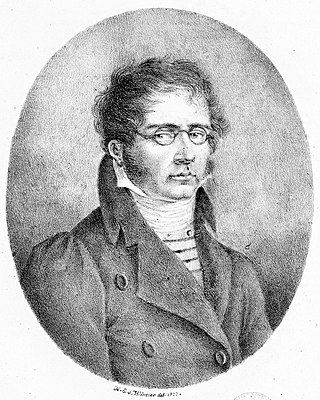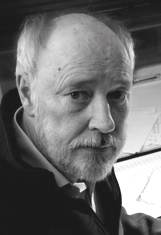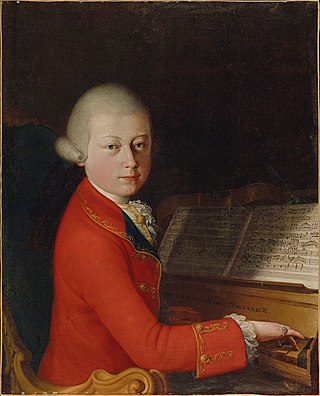
Franz Ignaz Danzi was a German cellist, composer and conductor, the son of the Italian cellist Innocenz Danzi (1730–1798) and brother of the noted singer Franzeska Danzi. Danzi lived at a significant time in the history of European music. His career, spanning the transition from the late Classical to the early Romantic styles, coincided with the origin of much of the music that lives in our concert halls and is familiar to contemporary classical-music audiences. As a young man he knew Wolfgang Amadeus Mozart, whom he revered; he was a contemporary of Ludwig van Beethoven, about whom he — like many of his generation — had strong but mixed feelings; and he was a mentor for the young Carl Maria von Weber, whose music he respected and promoted.

The Brandenburg Concertos by Johann Sebastian Bach, are a collection of six instrumental works presented by Bach to Christian Ludwig, Margrave of Brandenburg-Schwedt, in 1721. The original French title is Six Concerts à plusieurs instruments, meaning "Six Concertos for several instruments". Some of them feature several solo instruments in combination. They are widely regarded as some of the best orchestral compositions of the Baroque era.

Carl Ditters von Dittersdorf was an Austrian composer, violinist, and silvologist. He was a friend of both Haydn and Mozart.

The Symphony No. 1 in E♭ major, K. 16, is a symphony written in 1764 by Wolfgang Amadeus Mozart at the age of eight years. By this time, he was already notable in Europe as a wunderkind performer, but had composed little music.

La clemenza di Tito, K. 621, is an opera seria in two acts composed by Wolfgang Amadeus Mozart to an Italian libretto by Caterino Mazzolà, after Pietro Metastasio. It was started after most of Die Zauberflöte, the last of Mozart's principal operas, had already been written. The work premiered on 6 September 1791 at the Estates Theatre in Prague.
The Sinfonia Concertante for Violin, Viola and Orchestra in E♭ major, K. 364 (320d), was written by Wolfgang Amadeus Mozart.

The Violin Concerto No. 5 in A major, K. 219, often referred to by the nickname "Turkish", was written by Wolfgang Amadeus Mozart in 1775, premiering during the Christmas season that year in Salzburg. It follows the typical fast-slow-fast musical structure.

Anders Erik Birger Eliasson was a Swedish composer.
Giuseppe Valentini, nicknamed Straccioncino, was an Italian violinist, painter, poet, and composer, though he is known chiefly as a composer of inventive instrumental music.

The Symphony No. 4 in D major, K. 19, by Wolfgang Amadeus Mozart was composed in London during the Mozart family's Grand Tour of Europe in 1765, when Mozart was 9 years old.

The Symphony No. 32 in G major, K. 318, was written by Wolfgang Amadeus Mozart in 1779, after his return from Paris.

Wolfgang Amadeus Mozart began his series of preserved piano concertos with four that he wrote at the age of 11, in Salzburg: K. 37 and 39–41. The autographs, all held by the Jagiellonian Library, Kraków, are dated by his father as having been completed in April and July of 1767. Although these works were long considered to be original, they are now known to be orchestrations of sonatas by various German virtuosi. The works on which the concertos are based were largely published in Paris, and presumably Mozart and his family became acquainted with them or their composers during their visit to Paris in 1763–64.
Michael Haydn's Symphony No. 28 in C major, Opus 1 No. 2, Perger 19, Sherman 28, MH 384, was written in Salzburg in 1784, was the third and last symphony published in his lifetime. The publisher, Artaria, also published several of Joseph Haydn's symphonies.
Michael Haydn's Symphony No. 39 in C major, Perger 31, Sherman 39, MH 478, written in Salzburg in 1788, is the last C major symphony he wrote, the sixth of his final set of six symphonies.

Symphony No. 13 in F major, K. 112, by Wolfgang Amadeus Mozart, was written in Milan during his second journey to Italy in the autumn of 1771. The symphony is in four movements, the second of which is scored for strings alone. The third movement minuet may have been written earlier, and then incorporated into the symphony—the autograph manuscript shows the minuet copied in Leopold's hand. Nicholas Kenyon describes Symphony No. 13 as the last in "conventional mode"—thereafter "we are in the beginnings of a different world."

Symphony No. 19 in E-flat major, K. 132, is a symphony composed by Wolfgang Amadeus Mozart in July 1772.

The Symphony No. 23 in D major, K. 181/162b, by Wolfgang Amadeus Mozart was dated as complete on May 19, 1773. It is sometimes called "Overture", even though the autograph score bears the title "Sinfonia". The symphony is scored for 2 oboes, 2 horns, 2 trumpets, and strings.

The Sinfonia Concertante for Four Winds in E-flat major, K. 297b, is a work thought to be by Wolfgang Amadeus Mozart for oboe, clarinet, horn, bassoon, and orchestra. He originally wrote a work for flute, oboe, horn, bassoon, and orchestra, K. Anh. 9 (297B), in Paris in April 1778. This original work is lost.
The Symphony in B♭ major "No. 55", K. Anh. 214/45b, was probably written by Wolfgang Amadeus Mozart in early 1768 in Salzburg.
"Voi avete un cor fedele", K. 217, is a concert aria by Wolfgang Amadeus Mozart for solo soprano and orchestra, composed in Salzburg, dated 26 October 1775. Written around the time of the composition of Mozart's five violin concertos. In this aria, the character Dorinda contemplates a new romantic partner.









